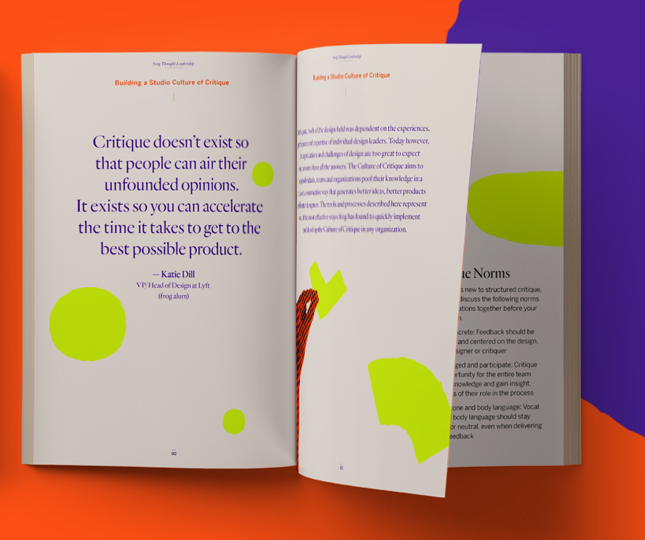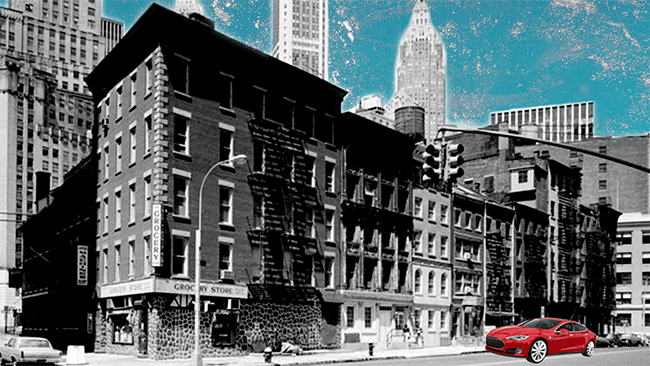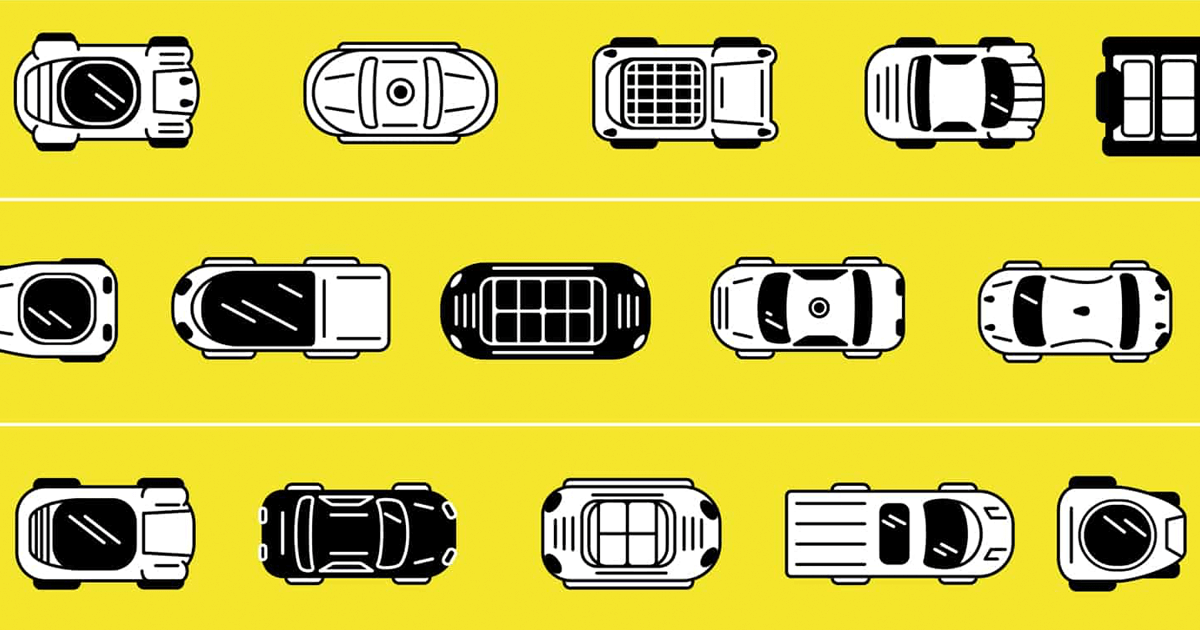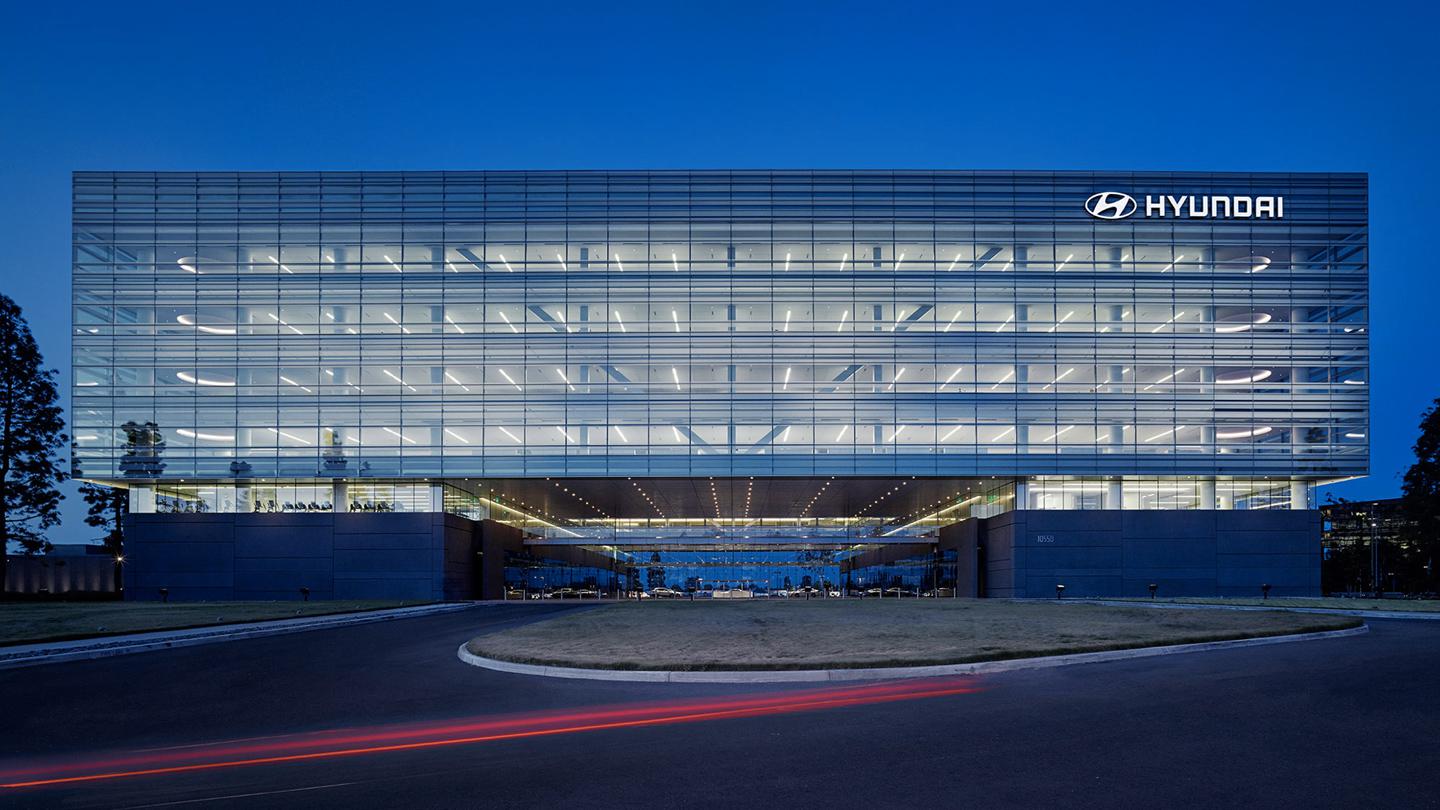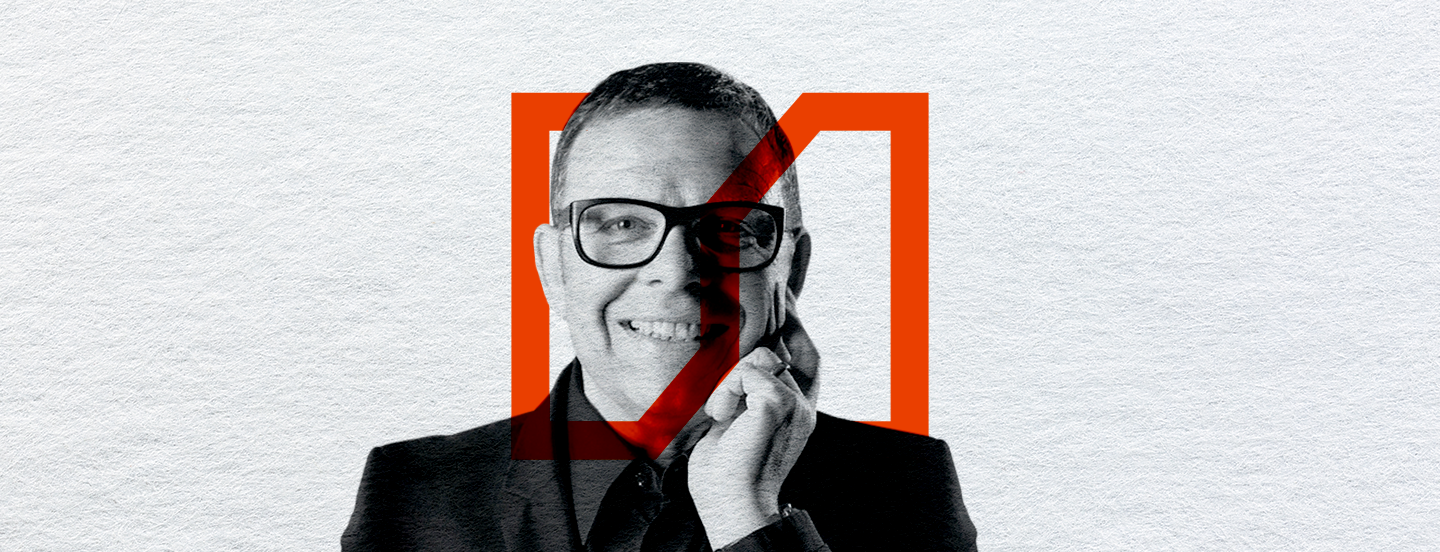
汽车设计大师的设计哲学(英)
Legendary car designer Peter Schreyer knows what it takes to design cars that people love. Now he’s committed to supporting a more sustainable transportation industry.
On this episode of the Design Mind frogcast, we had the privilege to speak with Peter Schreyer, a world-renowned car designer, best known for his design work on the Audi TT, the Volkswagen New Beetle, the Volkswagen Golf, the Hyundai Tucson, the Kia Stinger, and also for revitalizing the Kia Optima line—among many others. Today, Peter heads design management for Hyundai Motor Group. For more than two years, his team has been working with frog to develop creative strategies to support a more sustainable transportation industry.
Listen to the episode and read the transcripts below to hear how he got his start in design, where he finds his creative inspiration and why the most exciting thing about the future of designing cars might not be in designing cars at all. Plus, you’ll learn which cars he always enjoys seeing on the road—even when they pass him on the autobahn.
Some fast facts from Peter:
Best Song to Drive Fast To: ‘Crosstown Traffic’ by Jimi Hendrix
Manual or Automatic: Manual, even if it’s not as “practical”
Most Valuable Design Tool: A black mechanical pencil he never leaves home without. “It’s an automatic kind of reaction. If I need to explain something, I need to draw it out.”
His Proudest Design: “The car that I still see and I really love is the Audi A2. It was a low emissions car and still a very nice useful concept. I think this way of thinking is interesting to me—thinking for the future.”
Why Cars Still Need Human Drivers: Personal responsibility and human spontaneity. “There’s a certain type of etiquette in pulling up in your car. Do you want to stop right at the door or further away? It’s a matter of feeling. You still need to have the possibility of influencing this spontaneously.”
Episode Transcript:
Design Mind frogcast
Peter Schreyer: Visionary Car Designer, Recovering Petrol Head
Episode 1
[1:02]
I have liked cars. Maybe in the old way I am kind of a petrol head. My father taught me how to take a bend, and how to go into a curve, and shift back, and how to overtake. He liked driving actively and fast, and it’s always fascinated me.
[1:33]
As a designer, or as a car designer, I always considered it the best job in the world. My whole career, I’ve always reacted on my gut feeling. I think this is the only way I can work. It’s the only way I can think. My visions come more from the stomach, from the emotional side. I think this is the advantage to be able to have creative input with design thinking. As designers, we know a lot about the trends and what’s going on in the world and we are able to translate it. You are in this constant process of improvisation and finding new things, and getting new inputs from all kinds of directions—from architecture, from fashion, from trends in society, from all kinds of things—and you combine them always in a new way.
Following His Creative Instincts
[2:49]
When I grew up I was always interested in art, in creating things, drawing, painting, looking at the surrealists and the dadaists and all that, rather than being interested in mathematics and all those kind of things. So that path was probably paved in very early days. All these things somehow have an effect on each other and an effect on my work.
[3:23]
I actually walked past the Mozarteum in Salzburg yesterday, and I had my first key experience of a jazz concert there. A friend of mine and I, who was the drummer in the band that we had as boys, we went there on our bikes to see this concert and there were no more tickets. They said unfortunately there’s only stage tickets left. So we actually sat on the stage beside the musicians. This was such a key experience, this difference to everything else.
[4:04]
Classic musicians, as much as I admire this art form, they just play from a sheet and interpret what somebody else has composed before. A jazz musician invents it at the moment. What I really like about jazz is the way people improvise, and always react in the moment. They play together. This is also how you play on a team, on a design team. You have to have a good understanding of each other, a blind understanding—this is what happens in a band also. You have to find the right people and then you find this kind of, let’s call it a spiritual connection to them. Sometimes it’s important to have the same kind of humor, a similar way of looking at things.
A New Era of Transportation
[5:22]
You know, that there is a saying from Federico Fellini who said, “Only the visionary is the true realist.” If you’re not visionary, you do not recognize the things that are possible and that are probably really coming. People think they are realists, but they are living in the present and not thinking about future solutions.
[5:47]
The car industry is under such an enormous change at the moment and actually the trends are not at the horizon, they are right in front of us. You can hardly see the horizon. The industry still needs and is still looking for stylists, let’s say—people who are able to make a car that looks good, which is really an art form and is very important. It will stay important to make things that are driving around on the street a part of the environment and make it attractive.
[6:40]
Our world and the world of transportation, the world of cars, has changed a lot. I’m thinking about what is reasonable and what works for the future. One of the cars I’m driving is the Hyundai NEXO, it’s a hydrogen car. I think it’s a very interesting technology and it’s very advanced. It’s basically, more or less, the only hydrogen car with a fuel cell that you can buy at the moment. I think it’s very interesting and I just simply want to be part of that and try it out. It’s actually a cool feeling to drive it, even if it doesn’t have the performance of a sports car. It’s a different perspective.
[7:24]
You know, one of my designers, quite some years ago, a Korean designer, he said to me, “So, how do you see electric cars? Don’t you think that we are missing the sound and the scent of a V8, which makes cars so exciting?” And I said, “You know, think about the other way around. If we only had electric cars and somebody came and said, ‘I made an invention. I invented the gasoline engine and it burns oil, and you have to make gasoline, and the burnt oil is coming out through an exhaust pipe into the air, and it makes a noise?’ Nobody would understand.”
[8:18]
The pure petrol head doesn’t do it anymore. I am still of this old generation, but now we need people who understand mobility. The Royal College of Art in London has changed the name of their department, and now it’s called ‘Intelligent Mobility.’ Before it was just ‘Transportation Design.’ So this is a big difference, and it needs people who want to be a part of that—still people who are, of course, creative, visionary and also people who can shape a car. It’s gotten more challenging, but at the same time extremely competitive.
[9:03]
All these environmental problems we have at the moment are certainly influencing us a lot and challenging us to find new solutions. Technologically there are a lot of things that are coming or are already present, like different kinds of electric, hydrogen, autonomous driving, artificial intelligence, all these kind of things—they are there and we need to react on them and we need to take this challenge on. Artificial intelligence is learning probably, and in the future it’s going to improve, but I still believe in real intelligence. Real intelligence: creativity, fantasy and vision.
Designing Transportation for the Whole World
[10:38]
I think this kind of German-ness in design, let’s call it the German philosophy, is something I grew up with. It’s also something I have learned when I grew up in design, and when I studied it, and when I came to Audi. On the other hand, I always felt that we are not doing cars for Germany only—we’re doing cars for the whole world.
[11:23]
I think that public transport, individual mobility from bikes and cars, and public transportation and maybe flying machines, it should all be part of a system that makes mobility easier and more effective.
[11:43]
Within the Hyundai Motor Group, we have one company that’s called Rotem and they make trains. Recently we have been developing a tram, a hydrogen tram. This is a really interesting project, I think—make a cool tram! Think about how you can make a tram more effective, and a cool piece that travels through the city.
[12:11]
It needs to be a system, that’s for sure. I think cars will still play an important role in the future, now with COVID I think people will want to be in cars again more because it’s a safe way, it’s your own environment.
Sustainability in the Transportation Industry
[12:46]
My team and I have been working together with frog for about 2 1/2 years to develop creative strategies together. We’ve been very successful so far, but we cannot really talk publicly about it. Sustainability plays a very important role, especially in uncertain times like this. Yeah, I can’t give away too much.
[13:12]
As a big company—and I think this counts for every big organization—we need to think about and work on sustainability in every direction. If you look for sustainability in a translator, you will find about five or six German words for it there that are very different. I look at it that way. If there’s many different types of sustainability, you can talk about solutions for environment and pollution, but also for a cultural change in the company, sustainability in society and all these kind of things. To think about sustainability and find solutions within the group is very important. An industrial organisation like we are needs to aim for making a lower impact and there’s a necessity of speeding up to make the company more circular, and also find the right talent, and the right people, and to make connections to other companies—to find solutions and first do pilots, to try things out.
The Power of Concepts
[14:40]
The way I always looked at it, when you do a concept car, it needs to have a potential and a theme about it—either with a new technology or to open a new niche in the market, to find a new solution for new demands that customers probably have. A production car when it comes out, when people see it the first time, it shows how we’ve been thinking three, four years before. When you do a concept car and you put it to a motor show, or you show it to the public and to the media, you have the possibility to give a glimpse into our thinking world where we stand now. It’s also good to ahead of time get people aware and interested in new things.
[15:46]
I think in the old days when you look at studies when cars looked like rocket ships, that was a time when the concepts only were about the shape and the styling. Concerning this kind of thing, we’re going through a paradigm change.
[16:03]
When you think about sustainability and our environment and all these kinds of things, I feel a responsibility towards the young generation and towards my kids who inspire me a lot. I can see how they think, how they look at the world and what they expect. I still want to be a part of a company that cares about the future and about these kinds of things, and tries to find solutions. It sounds very ambitious, but to create a better world, let’s say.
Making His Mark in Car Design
[16:44]
My ambition was never to make a mark as a designer, you know what I mean? It just happened, because I tried to do good things. I tried to make good things for the company I’m working for. For me, it’s a very rewarding feeling if you get this kind of respect. I always enjoy when I see a car that I have made, when I pass it on the autobahn, or I get passed by one of them, or when I stop at the traffic light, and I have a car that I designed next to me and I look to see who’s driving it. It’s just a nice feeling. It’s the great thing about our job. You can see the results of your work everyday, everywhere in the world, everywhere. That’s fantastic—the feeling that you actually did something that is part of the environment somehow.
[17:48]
I remember quite some time ago, the new Golf was just out—the one that I did. I pulled up in front of a supermarket in Austria, and next to me, just after me came a young lady in that new Golf. She stepped out of the car and met her friend and said, “Look what I’ve got!” You know, you sit next to this and you think, how great is that? This is fantastic.
His Advice to Young Designers
[18:21]
This is the advice I would give to young designers today: you have to be really open-minded, to be able to look at the big picture. You have to still be able to have the skills of designing a car, but that’s not enough. I also think they need to understand, and this is a big change as well I think, that there is not only cars. There are other things in transportation and mobility that are interesting and challenging to be designed. I think designers know what they need to do. It’s more for the leaders of the industry—they should listen to designers more.
We want to sincerely thank Mr. Peter Schreyer of the Hyundai Motor Group for taking the time to share his thoughts on his work with us, and for giving us so much to think about in the world of mobility. Subscribe to the Design Mind frogcast wherever you listen to podcasts. And if you have any thoughts about the show, we’d love to hear from you. Reach out at frog.marketing@frog.co.
